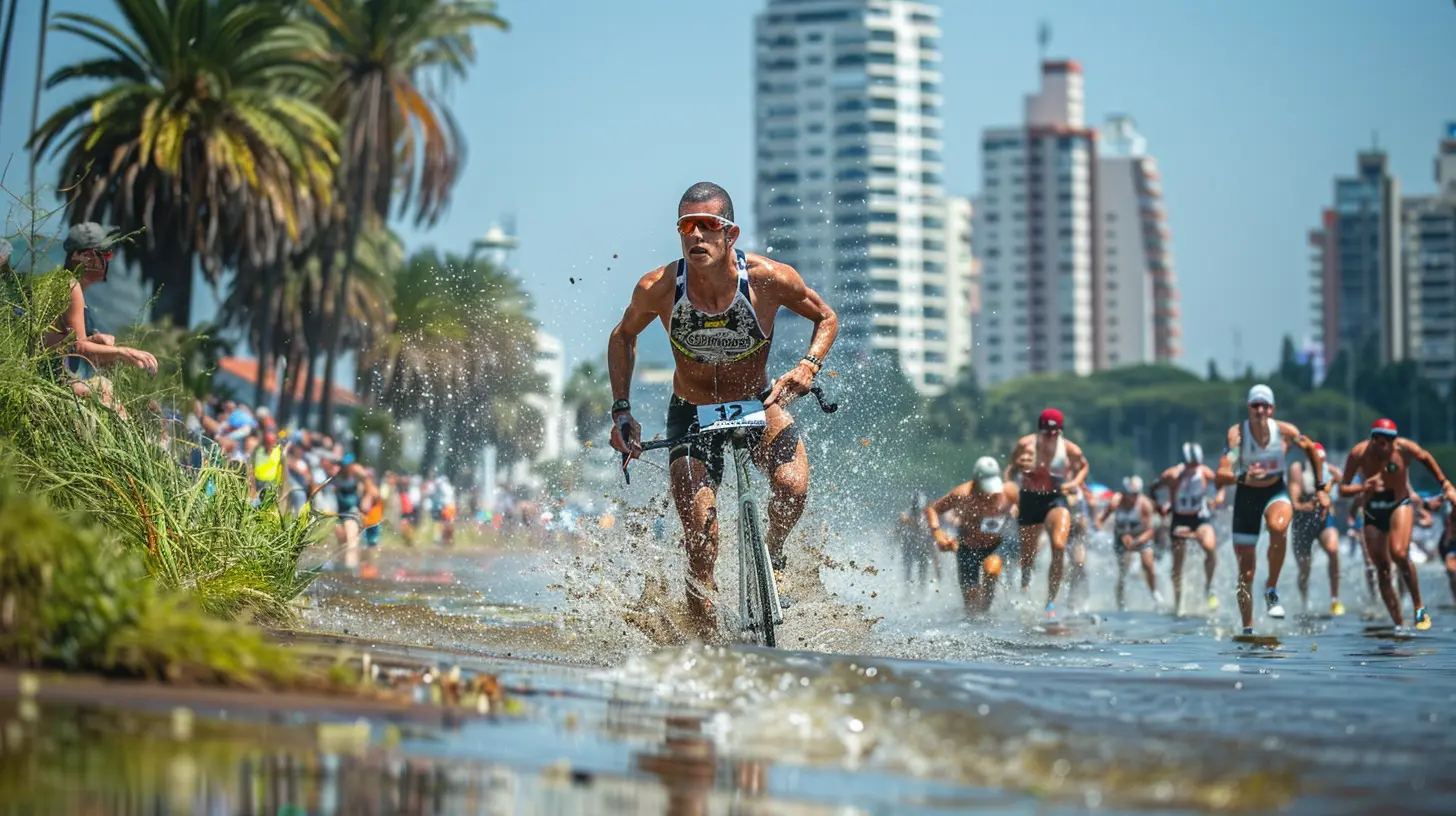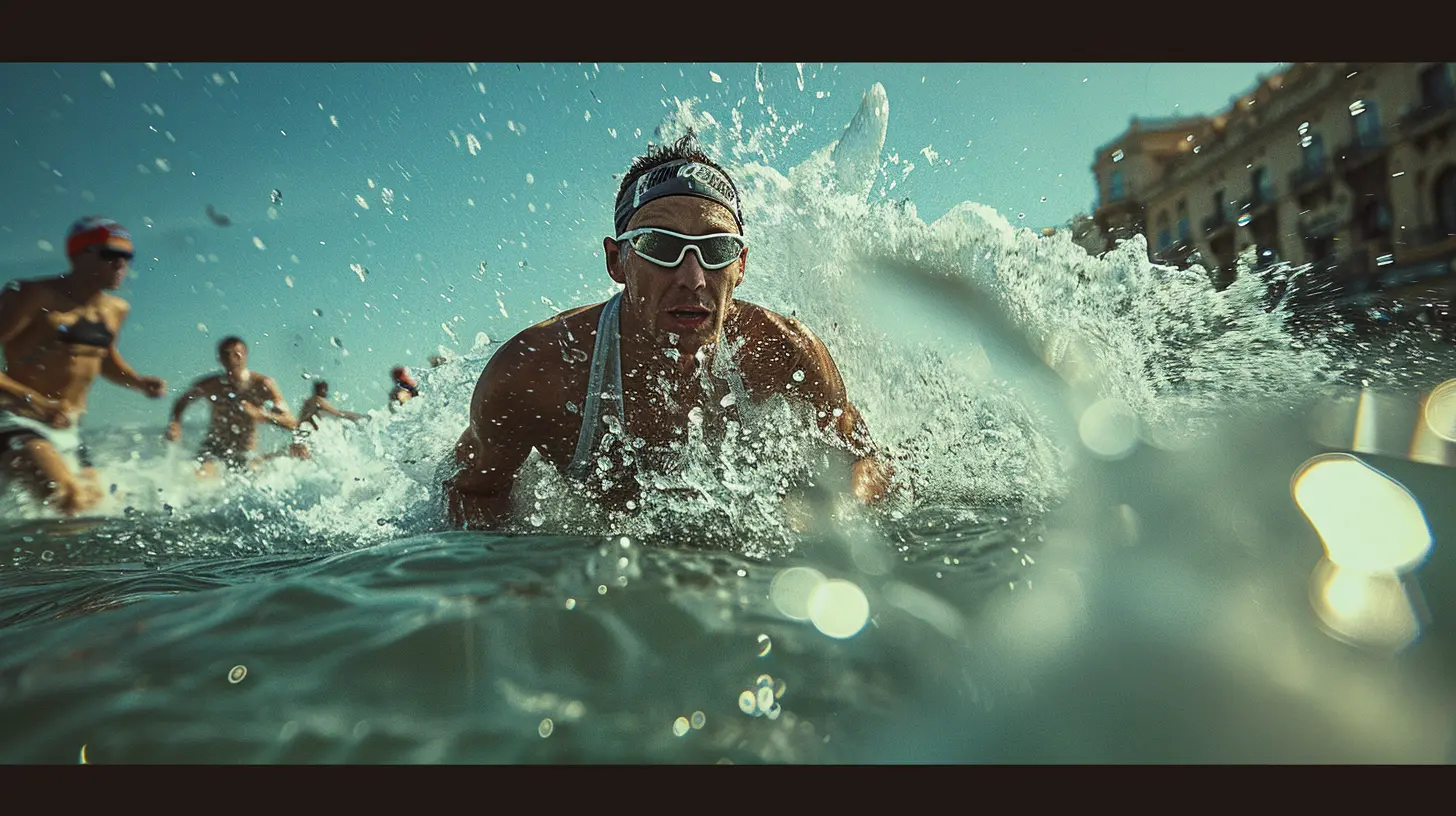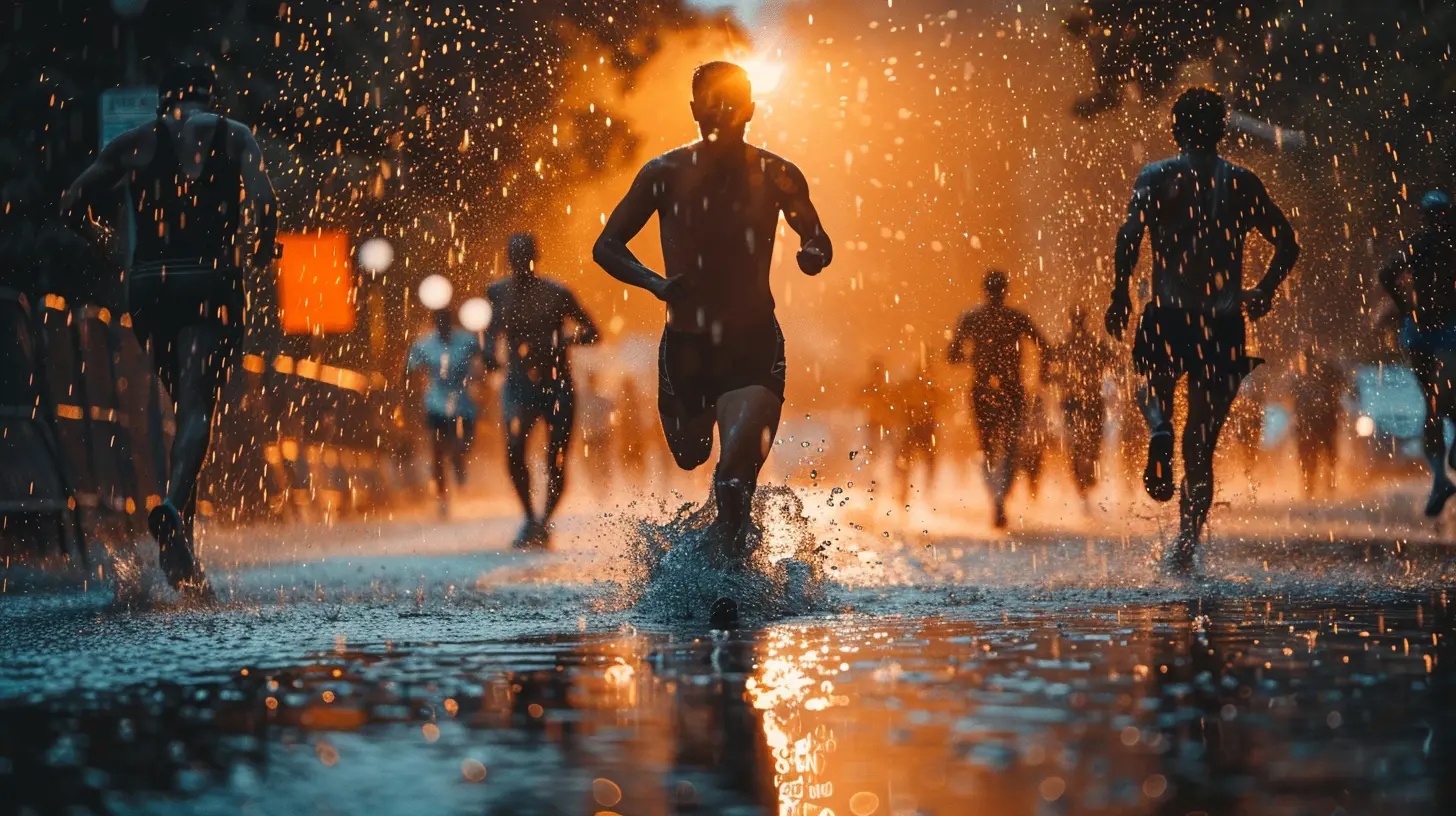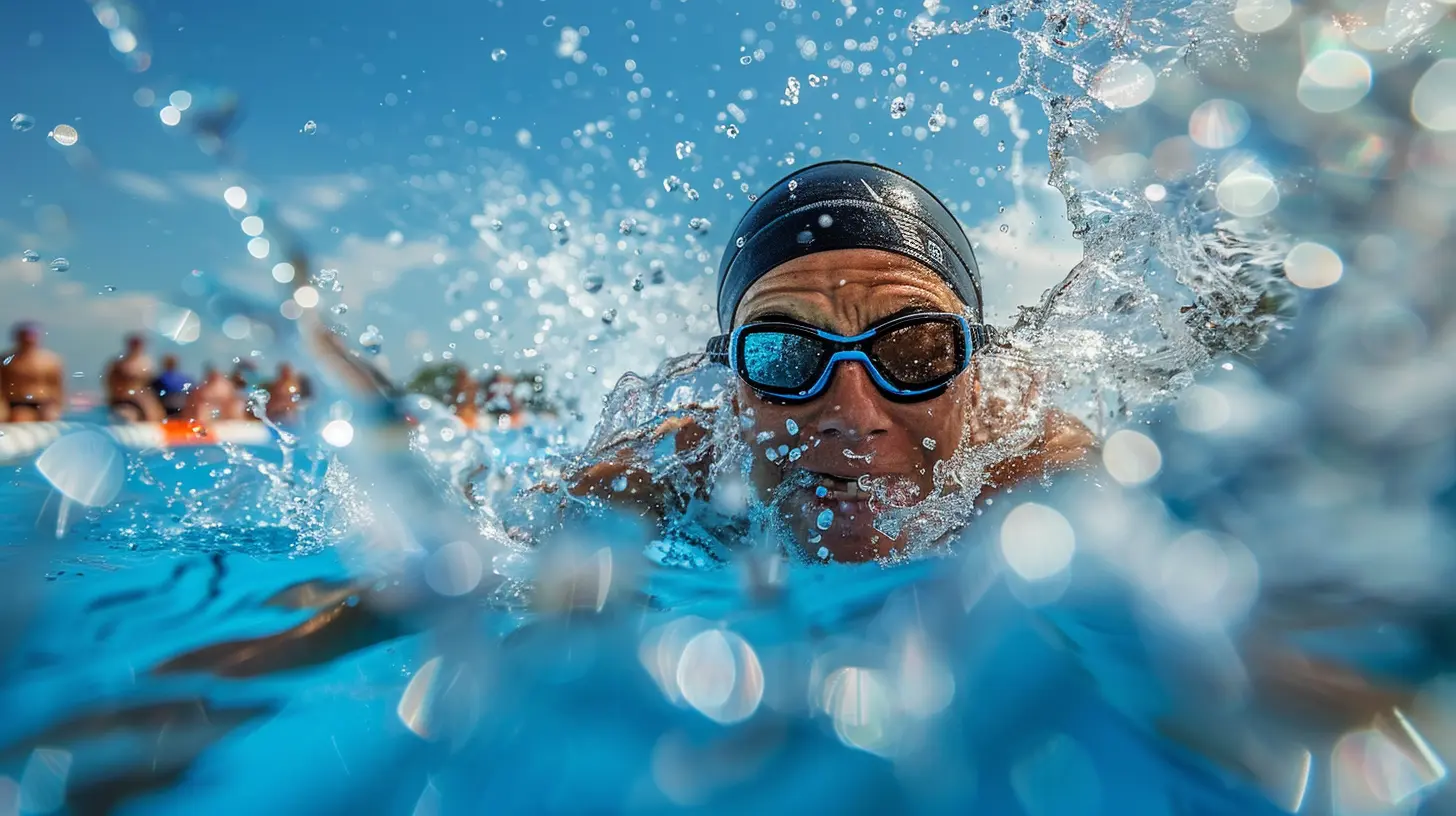How to Handle the Heat: Racing in Hot and Humid Conditions
10 June 2025
Triathlons are tough. But you know what makes them even tougher? Racing in the scorching heat and suffocating humidity. It’s one thing to push your body through swimming, cycling, and running, but it’s another to do all that while battling the sun’s relentless rays and the thick, humid air. If you’ve ever felt like you were swimming through a sauna or cycling in a furnace, you know exactly what I’m talking about.
Heat and humidity can be brutal, and they can take a toll on your performance if you’re not prepared. But fear not! With some smart planning and adaptation, you can not only survive but thrive in these tough conditions. So, how do you beat the heat and come out on top? Let’s dive in.

Understanding the Effects of Heat and Humidity
Before we get into the strategies, it's essential to understand why heat and humidity can be such a nightmare for athletes. When you exercise, your body generates heat, and to keep your core temperature stable, you start sweating. Sweat evaporates from your skin, cooling you down. Pretty straightforward, right?Well, here’s the problem: when the air is humid, sweat doesn’t evaporate as efficiently. It just kind of lingers there, making it harder for your body to cool down. And when your internal temperature starts rising, things can go sideways quickly. We’re talking about dehydration, heat exhaustion, and even heat stroke if things get really bad.
Not to mention, heat increases your heart rate, making everything feel harder than it normally would. What might feel like a light jog on a cool day can feel like a marathon in the heat. So, how do you handle this? Let’s break it down.

Hydration: Your Best Friend
There’s no way around this—hydration is absolutely crucial when racing in hot and humid conditions. Your body will lose fluids faster than usual, and it’s your job to stay ahead of the game. But, it's not just about drinking water.Electrolytes Matter
When you sweat, you’re not just losing water; you’re also losing essential electrolytes like sodium, potassium, and magnesium. These electrolytes are critical for maintaining muscle function and keeping your energy levels up. If you’re only drinking water, you might dilute your electrolyte levels too much, which can lead to issues like muscle cramps or even hyponatremia (a dangerous drop in sodium levels).So, what’s the plan? Incorporate electrolyte-rich drinks or supplements into your hydration strategy. Sports drinks, electrolyte tablets, or even some salty snacks can help you maintain that balance. You should aim to hydrate consistently, not just when you feel thirsty—by then, you might already be behind.
Pre-Hydration is Key
Start hydrating the day before your race. If you wait until race day to start chugging water, it’s already too late. Your body needs time to absorb fluids and build up those electrolyte stores. Sip water consistently in the 24 hours leading up to the event, and avoid alcohol or caffeinated drinks—they’ll dehydrate you.
Dress for Success
What you wear can make a huge difference when racing in the heat. The goal is to keep your body as cool as possible, and that starts with your clothing.Light and Breathable Fabrics
You want lightweight, moisture-wicking, and breathable materials. Cotton? Leave it at home. It absorbs sweat and sticks to your body like a wet towel. Instead, opt for technical fabrics that are designed to pull sweat away from your skin and allow for maximum air circulation.Light Colors
Dark colors absorb heat, while light colors reflect it. Stick to whites, pastels, or light grays to avoid turning your shirt into a solar panel.Sunglasses and a Hat
A good pair of UV-protective sunglasses will shield your eyes from the sun and reduce strain. A lightweight, breathable hat or visor can also protect your face and head from overheating. Just make sure the hat is made from moisture-wicking fabric, so it doesn’t trap heat.
Acclimatization: Train in the Heat
You can’t expect to race well in hot and humid conditions if you’ve been training in a climate-controlled gym or in cool weather. Your body needs time to adapt to the heat, and that’s where acclimatization comes in.Gradual Exposure
Start by training in the heat for shorter periods and gradually increase the duration and intensity over time. This allows your body to adapt. Typically, it takes about 10-14 days for your body to adjust to a hot climate. During this time, your body will become more efficient at cooling itself down, and you’ll sweat more (which is a good thing!).Timing Your Workouts
If you’re racing in the morning, try to schedule some of your workouts at the same time of day. This will help your body get used to the conditions you’ll face on race day. Plus, the morning sun can be just as intense, so it’s a good opportunity to practice.Fueling: Adjust Your Nutrition
Heat and humidity can mess with your appetite, but you still need to fuel your body properly. In fact, you’ll probably need more energy than usual to keep up with the demands of the heat.Eat Light but Energizing Foods
Heavy meals can weigh you down and make you feel sluggish, especially in the heat. Stick to light, easily digestible foods like fruits, vegetables, and whole grains. Bananas, oranges, and watermelon are fantastic options—they’re hydrating and packed with electrolytes.Timing Matters
Don't wait until you’re starving to eat. Eating smaller meals or snacks every 2-3 hours leading up to the race will help keep your energy levels stable. On race day, consume easily digestible carbs before the event. Gels, chews, or energy bars can be a lifesaver mid-race, but avoid anything too heavy or fibrous.
Cooling Strategies During the Race
Even with the best preparation, the heat can still be overwhelming. That’s why you need to have a few cooling strategies up your sleeve when things start heating up.Use Cold Water
During the race, take advantage of aid stations offering cold water. Not only should you drink it, but you can also pour some over your head, neck, and chest to help cool your core temperature. Some athletes even put ice cubes under their hats or in their sports bras to keep cool.Wet Towels or Sponges
If available, grab a wet towel or sponge and place it on the back of your neck or wrists. These areas are rich in blood vessels, and cooling them down can help lower your body temperature quickly.Adjust Your Pacing
The heat will make everything feel harder, so you might need to adjust your pace to avoid overheating. It’s better to slow down slightly and maintain a steady pace than to push too hard and risk blowing up halfway through the race.Mental Toughness: Embrace the Challenge
Let’s be real—racing in hot and humid conditions is as much a mental challenge as it is a physical one. The heat can make you want to quit, and your brain will start firing off signals telling you to slow down or stop.Stay Positive
One key to mental toughness is staying positive. Instead of focusing on how miserable the heat is, remind yourself that everyone else is dealing with the same conditions. If you can keep your cool (both mentally and physically), you’ll have an advantage over those who let the heat get in their heads.Break the Race into Sections
When the going gets tough, break the race into smaller, more manageable sections. Focus on getting to the next aid station or the next mile marker, rather than thinking about how far you have to go. This mental trick can make the race feel less overwhelming.Visualize Success
Before the race, spend some time visualizing yourself handling the heat with ease. Picture yourself crossing the finish line strong, despite the tough conditions. This mental rehearsal can help boost your confidence and prepare you for the challenge ahead.
Recovery: Cool Down the Right Way
Once you cross the finish line, the focus should shift to recovery. The heat will have taken a lot out of you, and proper recovery is essential to prevent heat-related issues.Rehydrate Immediately
As soon as you finish, start rehydrating. Again, prioritize electrolyte-rich drinks to replenish what you lost during the race. Avoid alcohol right after the race—it’ll just dehydrate you further.Get Out of the Sun
Find a cool, shaded area where you can sit down and let your body cool off. If possible, use a fan or cold towels to accelerate the cooling process.Stretch and Refuel
After cooling down, gently stretch your muscles to prevent stiffness. Then, refuel with a mix of carbohydrates and protein to kickstart the recovery process.Racing in hot and humid conditions is challenging, but with the right preparation and mindset, you can handle it like a pro. Hydrate, dress smart, train in the heat, and stay mentally tough. The heat may be brutal, but you’re tougher.
all images in this post were generated using AI tools
Category:
TriathlonAuthor:

Uziel Franco
Discussion
rate this article
2 comments
Emory McMillen
Racing in hot and humid conditions requires careful preparation and strategy. Hydration is crucial; athletes should drink fluids before, during, and after. Adjusting pacing and wearing moisture-wicking clothing can enhance performance. Acclimatization and monitoring body temperature are also essential to prevent heat-related illnesses.
June 20, 2025 at 3:55 AM

Uziel Franco
Absolutely! Proper hydration, pacing adjustments, moisture-wicking gear, acclimatization, and temperature monitoring are key strategies for racing effectively in hot and humid conditions. Thank you for the insightful comment!
Kaitlin Abbott
Embrace adaptability: listen to your body, stay hydrated, and adjust your pace. Success in heat is about smart strategy, not just effort.
June 14, 2025 at 3:22 AM

Uziel Franco
Absolutely! Adapting to your body's signals and prioritizing hydration are key to racing successfully in heat. Smart strategies lead to better performance.
![The Complete Player: How [Player Name] Excels in Every Aspect of the Game](/pictures/blog/small/the-complete-player-how-player-name-excels-in-every-aspect-of-the-game_2.webp)

